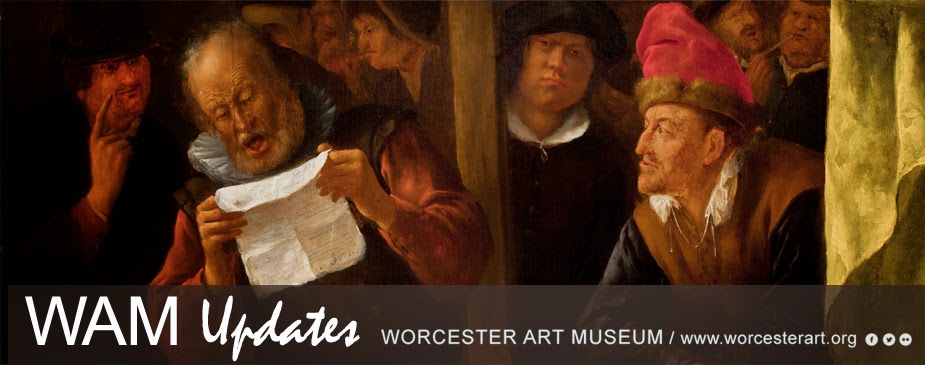



One of the most important priorities at the Worcester Art Museum is to increase accessibility so community members of all abilities can discover the joy of connecting with art at the Museum. I’m pleased to announce that an exciting new partnership with VSA Massachusetts, an affiliate of the Seven Hills Foundation, creates a new gallery space for artists with disabilities. Called the Open Door Gallery at the Worcester Art Museum this bright area, overlooking the Stoddard Garden Courtyard from the Higgins Education Wing, provides a meaningful opportunity for these artists to show their works, while at the same time enhancing the Museum’s offerings in the Higgins Wing.
The first exhibit, currently on view, is “Life Cycles,” an exploration of the series of changes that take place in the life of an organism. The featured works examine the nature and psychological vocabulary of this life cycle and its relationship to culture, history, tactility, material and artistic output. The exhibit is free and open to the public during regular Museum hours. Please enter through the Lancaster Welcome Center.
As part of the VSA MA/WAM partnership, participants also frequently visit the Museum galleries, where they find inspiration and connect further with the ideas and images from over 50 centuries of creative expression. Increasing accessibility for people with disabilities increases accessibility and understanding for everyone. We are proud and delighted to welcome VSA Massachusetts to the Worcester Art Museum and invite you to discover their amazing creative gifts in the Open Door Gallery at WAM.
- Adam R. Rozan, Director of Audience Engagement







